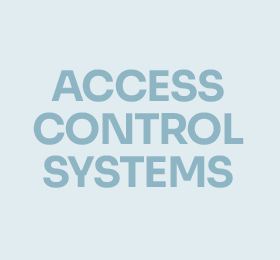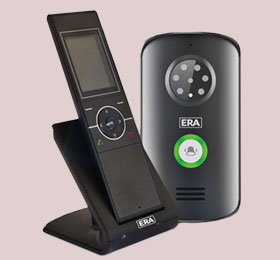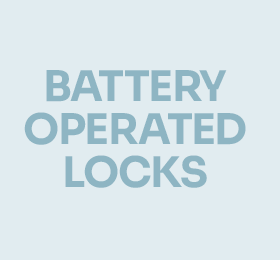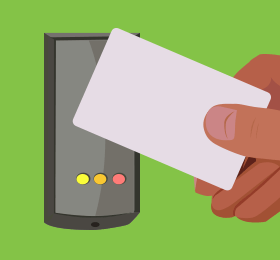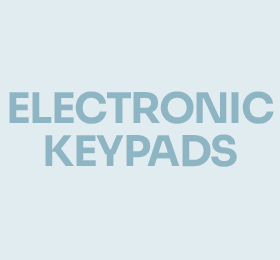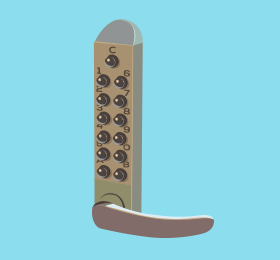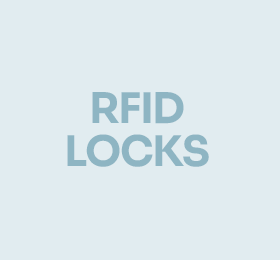Access Control
Access & Security Control
How Safe Is Your Business?
How safe is your office or business from wandering intruders? Individuals who should not be in the premises? Many of us work in buildings with open plan space where we all know each other individually. Others work in buildings with many floors and suites of offices, some with communal leisure spaces. With different people all using office and communal space it is often difficult if not impossible to know who has access rights to the premises and also to which areas of the premises.
Background to Security Access
All civilisations over time have used varying forms of access control, be it a log across a chasm or a drawbridge in a castle. Even down to our basic door, which if properly secured by a suitable locking mechanism, acts as a quite reliable form of access control.
However this is not quite what we think of when we use the term Access Control with regard to today's world. Today's modern access control systems are able to offer unforeseen advances in technology that even thirty years ago would not have been imagined by the professional security manager of the time, let alone the general public. Today not many people outside the security industry realise the range of technologies available.
Types of Access Control System
There are many different types of access control system; varying from the basic aforementioned door to specialist security doors which have their own built in electronics, which, coupled with computerisation, are able to recognise and read different types of codes. This could be in the form of a key with built in electronic circuits, magnetic swipe cards (Hi-Co or Lo-Co magnetic stripe on cards) proximity cards, digital push button systems or Infra red ray systems. Different risk evaluations may require the use of combinations of technologies which may include the use of CCTV imagery in the mix as the risk element increases. Newer control systems may also incorporate RFD transmission as this technology is rapidly spreading from the logistics industry into broader use. For many small to medium companies, a good quality photo ID card is adequate in providing a suitable security level.
From a humble hand written or typed badge to the digital printed cards that we are all aware of today, the plastic card and its applications have been ground breaking. Today's plastic cards for example are no longer just boring bits of plastic that you use to scrape the ice off your car windscreen.
Secure Access Solutions
Methods of controlling access, such as ID cards, work passes and access control cards, have mostly been looked at in the past as an unwelcome necessity. However, as the security of individuals and premises have become more highlighted in today's changing world, that view is not so widely held anymore.
If you work for a large company you may have a reception desk at the entrance where staff and especially visitors may be required to sign a visitors book with their basic details. A company may have a card access control system which allows individuals access to the workplace. The system may also have zone-protected rights where different individuals are only allowed access to certain areas of the building or facilities - e.g. access to server room. This has increasingly been the case in recent years with individuals use their personal ID card with a magnetic stripe on the rear to gain access to such areas and facilities. The magnetic stripe is encoded with the details of the individual and the relevant access rights. New technologies are now gaining ground in replacing the magnetic stripe and giving the company additional controls on who is accessing their premises at different times.
Proximity Cards and Tags
Many access control systems now use proximity cards or tags. They come in a number of shapes and sizes; anything from a key ring to a standard plastic credit card with in-built circuitry. As its title suggests proximity device readers only require the card or tag to be held near the reader for the door or barrier to open.
Management Monitoring Systems
Depending on management requirements and the security level required in the building, or areas within the building (e.g. computer suites), the information from the system may be stored in a database for possible further analysis of the movement of people throughout an area over a given time period. The majority of small companies do not require this level of sophistication with their access control and find that a photo ID card is perfectly adequate for their risk requirements.
Technical Features
ID cards come in full colour print with text in virtually any typeface. They are able not only to have a digital photograph of the individual holder, they can also feature any background image you can think of. Digitally designed images can be generated by graphics packages such as Adobe Photoshop or other specialist software from the major manufacturers.
Over the years the cost of digital plastic card printers have reduced and many companies large and small are using digitally printed cards. Some companies have looked at their expenditure on cards as an extension of their business, with many using professional graphics bureaux to design their background images in line with their company image.
Different technologies are available to be incorporated into a card design. Examples include ultraviolet inks, holograms, guilloche & fine line, micro text, ghost imaging, barcoding, watermarks, as well as clear and printed overlay laminates to protect and preserve the surface of the card. These features not only enhance the card but also help to give a favourable impression of your staff and company. Card technologies are rapidly moving with chip, biometrics and RFID technologies now being embedded into the make-up of the card. Things are moving at a rapid pace and your card is now much more than a little bit of plastic with a photograph.
Why Use Spectrum ID for Your Plastic Cards?
Not many companies have their own card printers, or the design software and skills to print their ID cards in-house. The majority of small to medium companies prefer to use an ID card bureau, to produce their ID cards. We specialise in many finishes and security features to enhance the look and function of your cards. Spectrum ID can provide an answer to your company access requirements and will ensure a professional finish every time.

